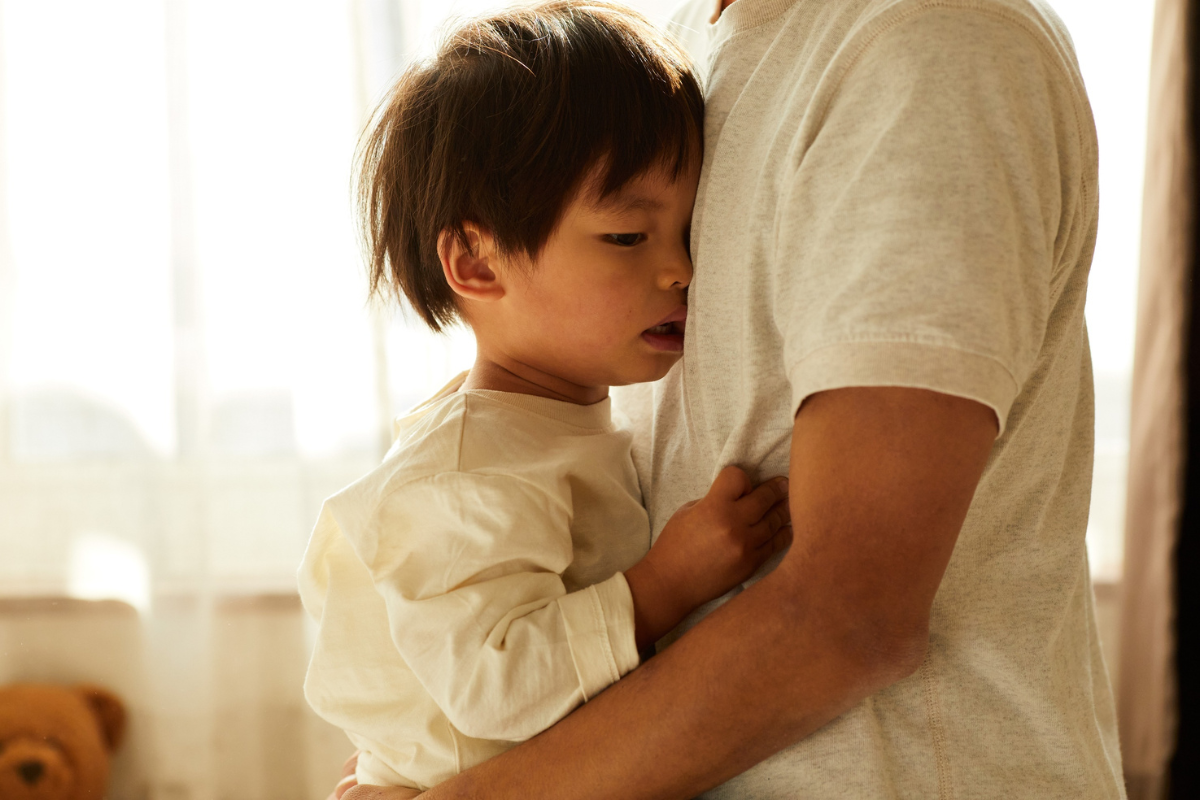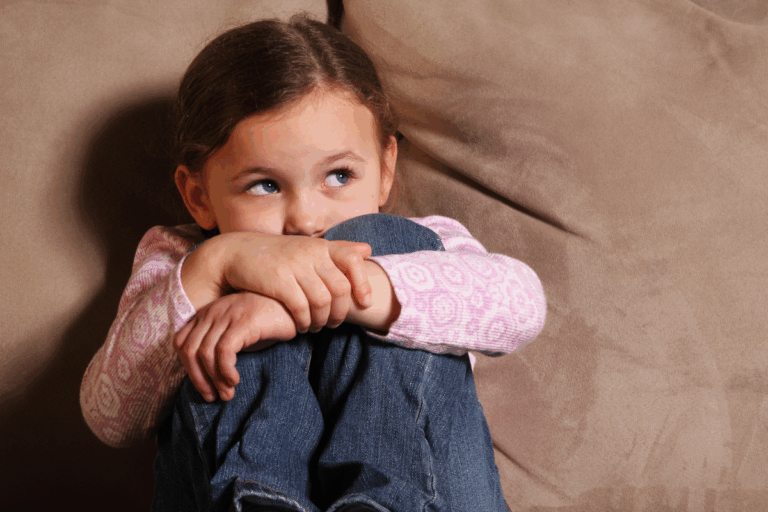The Role of Parenting in Addressing Fears and Phobias in Children
Meredith Rappaport, PA-C, CAQ-Psy, LCSW

Childhood is a time of wonder, exploration, and, inevitably, fear. From imaginary monsters lurking under the bed to the very real anxiety of school performance, children’s fears are as varied as they are common. While many of these fears are a normal part of development, some can escalate into phobias that interfere with daily life. As a parent, understanding and addressing these fears is crucial in guiding your child toward resilience and confidence.
Understanding Childhood Fears and Phobias
Fears are a normal part of childhood and often align with developmental stages. Recognizing these typical fears helps parents differentiate between normal anxieties and those requiring intervention.
Common Fears by Age
- Infants and Toddlers (0-2 years): loud noises, strangers and separation from parents
- Preschoolers (3-5 years): Imaginary creatures (monsters, ghosts), the dark, thunderstorms, animals
- School-Age Children (6-12 years): being alone, injury or death, natural disasters, performance anxiety
- Adolescents (13+ years): social rejection, academic failure, future uncertainties, health concerns
When Does Fear Become a Phobia?
Fears evolve into phobias when they:
- Persist for six months or more.
- Cause significant distress or impairment.
- Lead to avoidance behaviors that interfere with daily life.

Parental Roles in Addressing Fears and Phobias
Parents are instrumental in helping children navigate their fears. Here’s how:
- Validate Their Feelings
Acknowledging your child’s fears without judgment is essential. Phrases like, “I understand that you’re scared,” can be comforting. Avoid dismissing their fears as “silly” or “not real.” - Encourage Gradual Exposure
Helping your child face their fears in manageable steps is key to overcoming phobias. For instance, if they’re afraid of dogs, start by showing them pictures, observing dogs from a distance, and eventually interacting with a calm and friendly dog. - Model Calm Behavior
Children often mirror their parents’ reactions. Demonstrating calmness and resilience in stressful situations teaches effective coping strategies. - Foster Open Communication
Create an environment where your child feels comfortable discussing their fears. Ask open-ended questions like, “What makes you feel scared?” or “How can we make this better?” - Build a Routine
Consistent daily routines provide a sense of security and reduce uncertainty, which can exacerbate anxiety.
Effective Treatments for Childhood Phobias
If your child’s fear persists and disrupts their life, professional intervention may be necessary. Here are evidence-based approaches:
Cognitive Behavioral Therapy (CBT)
CBT is the gold standard for treating childhood phobias. It involves:
- Identifying and challenging negative thought patterns.
- Gradual exposure to feared objects or situations.
- Developing practical coping strategies.
Studies show that CBT significantly reduces anxiety symptoms in children.
Medication
In severe cases, medications like selective serotonin reuptake inhibitors (SSRIs) may be prescribed. Medication is usually considered when therapy alone isn’t effective.
Parental Involvement
Parents play a pivotal role by:
- Reinforcing therapy techniques at home.
- Providing a supportive and nonjudgmental environment.
- Avoiding reinforcement of avoidance behaviors.
Practical Strategies for Parents

- Limit Exposure to Scary Media
Monitor and regulate your child’s exposure to frightening images or stories, especially before bedtime. - Teach Relaxation Techniques
Simple breathing exercises, visualization, or mindfulness activities can help your child calm down during moments of anxiety. - Create a Safe Environment
Make your home a safe and secure space where your child feels protected and supported. - Celebrate Progress
Recognize and reward small victories as your child overcomes their fears. Positive reinforcement boosts confidence and motivation. - Seek Professional Help
If your child’s fear or phobia is severe, consult a child psychiatrist or psychologist. Early intervention can prevent the development of more severe anxiety disorders.
Building Resilience in Children
Helping children develop resilience is a proactive way to address fears before they escalate into phobias. Encourage problem-solving, foster independence, and provide opportunities for gradual risk-taking in a safe environment. Equipping your child with these skills can prepare them to handle challenges confidently.
Conclusion
Fears and phobias are a natural part of childhood development. However, when these fears become overwhelming, they can hinder a child’s growth and well-being. As a parent, your support, understanding, and proactive involvement are crucial in helping your child navigate their fears. By fostering a safe and supportive environment, encouraging gradual exposure, and seeking professional guidance when necessary, you can empower your child to overcome their fears and build resilience for the future.
Responsibly edited by AI
Other Blog Posts in
Animo Sano Psychiatry is open for patients in North Carolina, Georgia and Tennessee. If you’d like to schedule an appointment, please contact us.
Get Access to Behavioral Health Care
Let’s take your first step towards. Press the button to get started. We’ll be back to you as soon as possible.ecovery, together.




